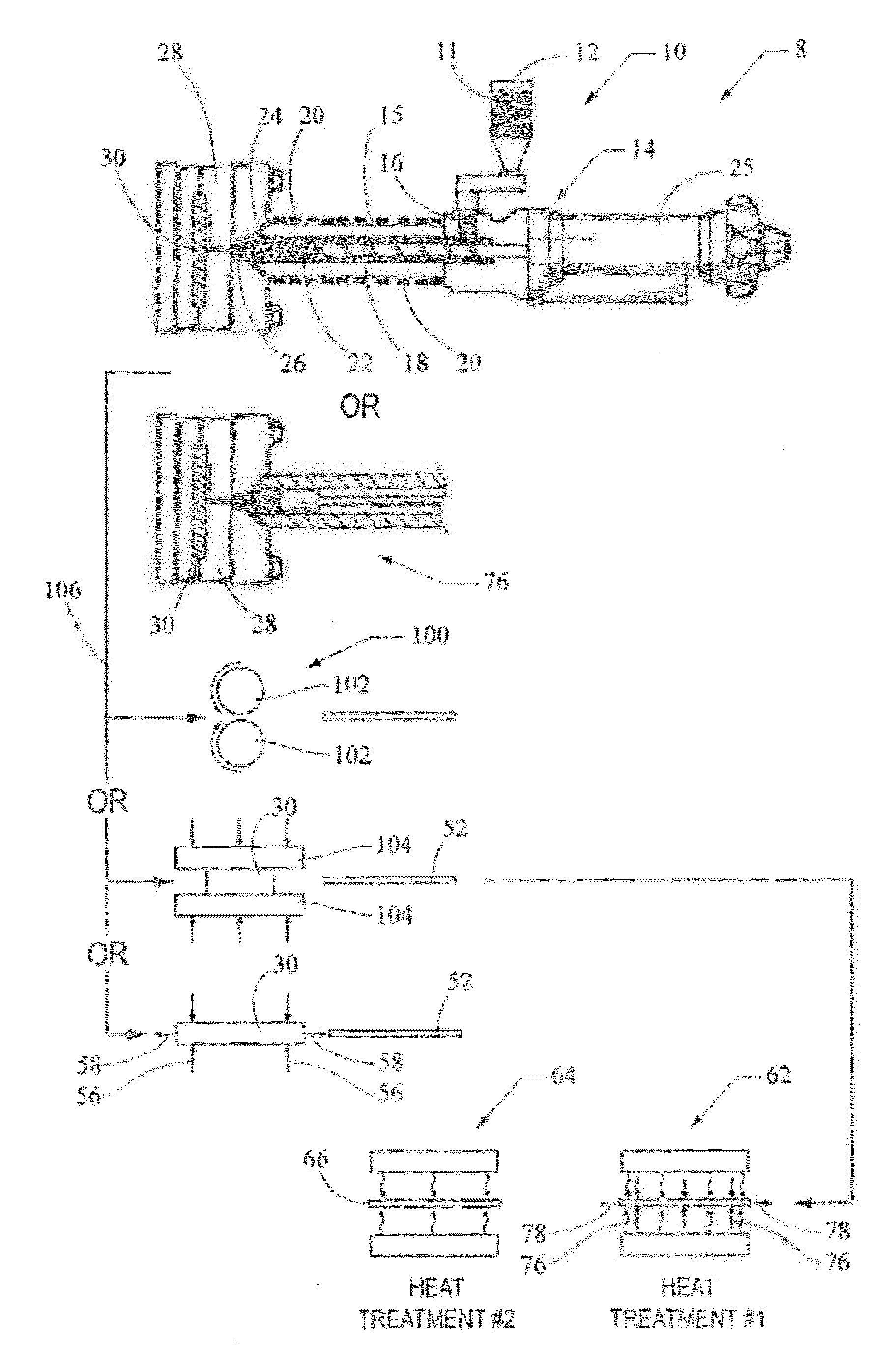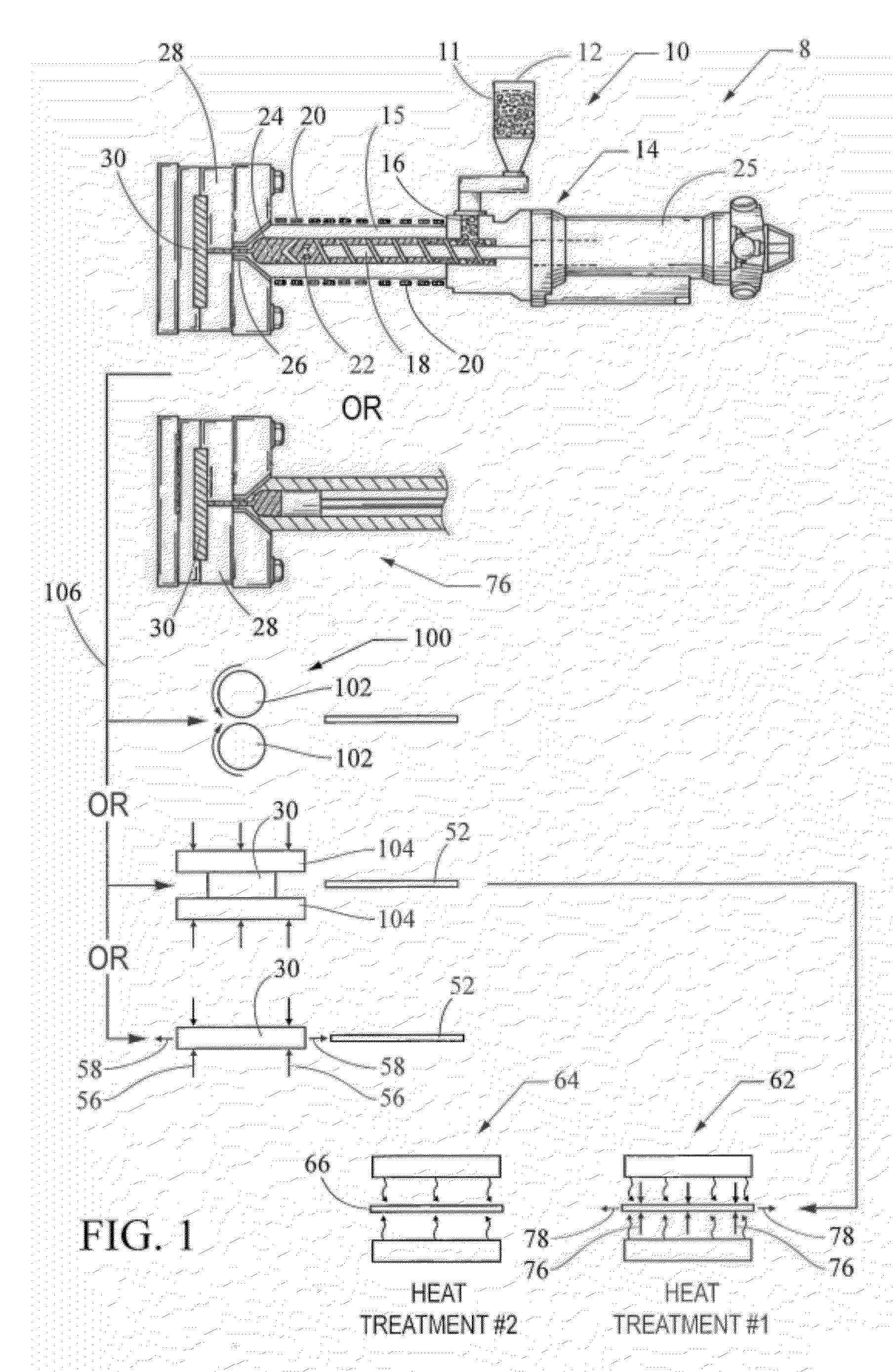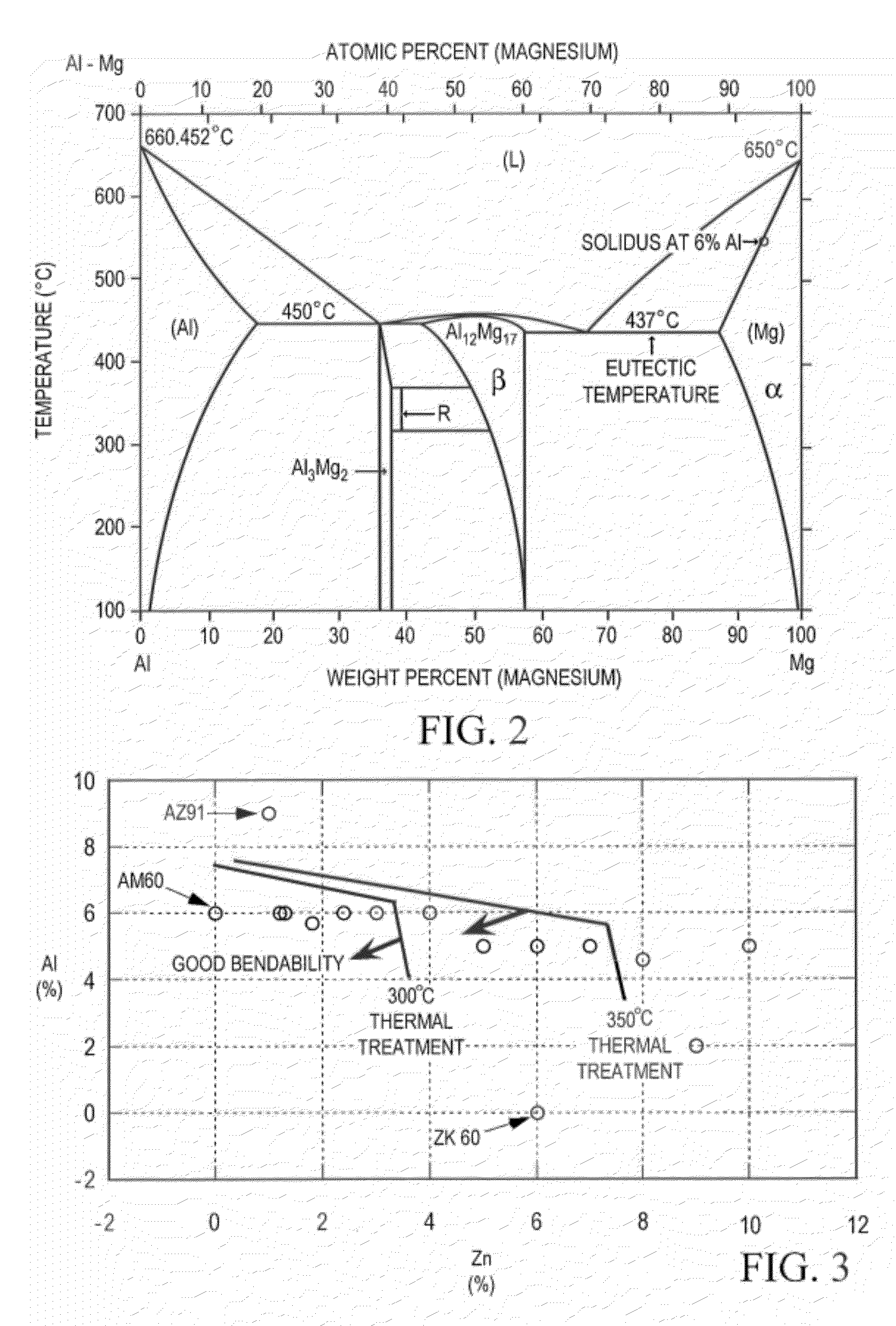Method and apparatus of forming a wrought material having a refined grain structure
a technology of grain structure and wrought material, which is applied in the direction of metal-working apparatus, mould handling/dressing devices, manufacturing tools, etc., can solve the problems of low yield strength of conventional mg and al alloys, poor formability, poor crack tolerance, etc., and achieves high strength and ductility, impact resistance and/or formability.
- Summary
- Abstract
- Description
- Claims
- Application Information
AI Technical Summary
Benefits of technology
Problems solved by technology
Method used
Image
Examples
Embodiment Construction
[0054]Various embodiments of the present invention are disclosed herein. It should be understood, however, that the disclosed embodiments are merely exemplary of the invention, which may be embodied in various and other alternative forms. The figures are not necessarily to scale; some figures may be configured to show the details of a particular component. Therefore, specific structural and functional details disclosed herein are not to be interpreted as limiting, but merely as a representative basis for the claims and for teaching one skilled in the art to practice the present invention.
[0055]With the present invention, new processes have been created that increase the strength, ductility and formability of certain metal alloys, such as Mg alloys or other suitable metal alloys. The key is a low cost bulk process to generate, for example, novel nanostructured metal alloys, such as Mg alloys with low texture, accomplished by Thixomat's fine-grained injection molding process, known as...
PUM
| Property | Measurement | Unit |
|---|---|---|
| porosity | aaaaa | aaaaa |
| temperature | aaaaa | aaaaa |
| temperature | aaaaa | aaaaa |
Abstract
Description
Claims
Application Information
 Login to View More
Login to View More - R&D
- Intellectual Property
- Life Sciences
- Materials
- Tech Scout
- Unparalleled Data Quality
- Higher Quality Content
- 60% Fewer Hallucinations
Browse by: Latest US Patents, China's latest patents, Technical Efficacy Thesaurus, Application Domain, Technology Topic, Popular Technical Reports.
© 2025 PatSnap. All rights reserved.Legal|Privacy policy|Modern Slavery Act Transparency Statement|Sitemap|About US| Contact US: help@patsnap.com



